Landscape Preferences of Recreational Walkways in Urban Green Spaces: Bada Shanren Meihu Scenic Area, China
Abstract
1. Introduction
2. Materials and Methods
2.1. Research Scope
2.2. Experimental Procedure
2.3. Related Methods
2.3.1. ELO Evaluation Algorithm
2.3.2. Depth Pro Model
2.3.3. Mask2Former Model
2.3.4. Quantification of Color Elements
2.3.5. Machine Learning Modeling Methods
2.3.6. SHAP Model
2.4. Selection of Objective Indicators
3. Results
3.1. Feature Contributions
3.2. Feature Dependency Analysis
3.3. Spatial Distribution of Features
- Positive correlations: Naturalness ( = 0.156, p = 0.001), Wildness ( = 0.117, p = 0.015), WVI ( = 0.527, p < 0.001), and Openness ( = 0.261, p < 0.001). Water features showed the strongest positive effect.
- Negative correlations: Artificialness ( = −0.23, p < 0.001), V_Low ( = −0.105, p = 0.03), and H_Purple ( = −0.129, p = 0.008), suggesting artificial elements and specific color tones reduce appeal.
- High brightness ( = 0.245, p < 0.001) and blue tones ( = 0.251, p < 0.001) enhanced preferences by increasing visual vibrancy and serenity, respectively.
- Non-significant indicators (p > 0.05): Freedom and Coordination require further investigation.
3.4. Single-Sample Local Interpretation
4. Discussion
4.1. Impact and Contributions on Planning and Design
4.2. Limitations
5. Conclusions
- (1)
- Superior Performance of Random Forest Model: The Random Forest (RF) algorithm outperformed the other five models (MAE = 13.62, MSE = 276.48, RMSE = 16.63, R2 = 0.875). It explained 87.5% of the target variable’s variance, demonstrating high accuracy and reliability in trail landscape preference assessment. By integrating the SHAP-RF method, this study quantified the contribution and importance of influencing factors at both global and local levels. The approach provides a scientific tool for landscape preference modeling and enhances the interpretability of machine learning models in theory and practice.
- (2)
- Key Influencing Factors for Trail Landscape Preference: Critical factors include WVI, BVI, freedom, GVI. Their importance varies, and different indicator values significantly affect their contribution direction and magnitude. For the Water Visibility Index (WVI), SHAP values exhibited a pronounced increase near the 0.05 threshold (marked by a vertical reference line), indicating that enhancing water features in low-visibility areas (WVI < 0.05) significantly improves preference scores. However, beyond WVI ≈ 0.1, further increases in water visibility yielded diminishing returns, with marginal gains in predictive contribution. Similarly, the Building View Index (BVI) demonstrated a critical threshold at 0.17, below which it strongly influenced preference, but above which its impact declined substantially. The Sense of Freedom variable showed an inverse relationship, with minimal contribution below 0.21 but a sharp increase beyond this threshold, peaking near 0.3. Notably, while Green View Index (GVI) maintained uniformly high SHAP values at lower levels (GVI ≤ 0.66), its predictive utility diminished progressively at higher values, suggesting an optimal range for vegetation visibility in preference formation. These nonlinear relationships underscore the importance of context-specific thresholds in landscape design interventions. These factors should be prioritized in improving scenic area landscape quality. SHAP-based local interpretation enables precise and targeted enhancements for specific locations.
- (3)
- Significant Correlations Between Landscape Preferences and Environmental Indicators: Preferences showed significant positive correlations with Naturalness ( = 0.156, p = 0.001), Wildness ( = 0.117, p = 0.015), WVI ( = 0.527, p = 0), and Openness ( = 0.261, p = 0). Among these, water landscapes had the strongest driving effect. Conversely, Artificialness ( = −0.23, p = 0), V_Low ( = −0.105, p = 0.03), and H_Purple ( = −0.129, p = 0.008) significantly suppressed preferences. This suggests that artificial interventions and specific color tones may reduce landscape appeal.
Author Contributions
Funding
Institutional Review Board Statement
Informed Consent Statement
Data Availability Statement
Conflicts of Interest
Abbreviations
| GVI | Green View Index |
| WVI | Water View Index |
| SVI | Sky View Index |
| BVI | Building View Index |
References
- Bedimo-Rung, A.L.; Mowen, A.J.; Cohen, D.A. The significance of parks to physical activity and public health: A conceptual model. Am. J. Prev. Med. 2005, 28, 159–168. [Google Scholar] [CrossRef]
- Zhang, Y.; Qin, W.; Qiao, L. Characteristics of the vertical variation in water quality indicators of aquatic landscapes in urban parks: A case study of Xinxiang, China. PLoS ONE 2024, 19, e314860. [Google Scholar] [CrossRef]
- Palmer, S.E.; Schloss, K.B.; Sammartino, J. Visual aesthetics and human preference. Annu. Rev. Psychol. 2013, 64, 77–107. [Google Scholar] [CrossRef] [PubMed]
- Golestani, N.; Khakzand, M.; Faizi, M. Evaluation of the quality of participatory landscape perception in neighborhoods of cultural landscape to achieve social sustainability. Aestimum 2022, 81, 71–91. [Google Scholar] [CrossRef]
- Antrop, M. Landscape change and the urbanization process in Europe. Landsc. Urban Plan. 2004, 67, 9–26. [Google Scholar] [CrossRef]
- Zhang, X.; Xiong, X.; Chi, M.; Yang, S.; Liu, L. Research on visual quality assessment and landscape elements influence mechanism of rural greenways. Ecol. Indic. 2024, 160, 111844. [Google Scholar] [CrossRef]
- Gyurkovich, M.; Pieczara, M. Using composition to assess and enhance visual values in landscapes. Sustainability 2021, 13, 4185. [Google Scholar] [CrossRef]
- Chon, J.; Scott Shafer, C. Aesthetic responses to urban greenway trail environments. Landsc. Res. 2009, 34, 83–104. [Google Scholar] [CrossRef]
- Keith, S.J.; Larson, L.R.; Shafer, C.S.; Hallo, J.C.; Fernandez, M. Greenway use and preferences in diverse urban communities: Implications for trail design and management. Landsc. Urban Plan. 2018, 172, 47–59. [Google Scholar] [CrossRef]
- Teng, J.; Zhang, C.; Gong, H.; Liu, C. Machine learning-based urban noise appropriateness evaluation method and driving factor analysis. PLoS ONE 2024, 19, e311571. [Google Scholar] [CrossRef]
- Pasini, M.; Berto, R.; Brondino, M.; Hall, R.; Ortner, C. How to measure the restorative quality of environments: The PRS-11. Procedia-Soc. Behav. Sci. 2014, 159, 293–297. [Google Scholar] [CrossRef]
- Curran, S.L.; Andrykowski, M.A.; Studts, J.L. Short form of the profile of mood states (POMS-SF): Psychometric information. Psychol. Assess. 1995, 7, 80. [Google Scholar] [CrossRef]
- Hong, C.Y.; Chang, H.; Chung, E.S. Comparing the functional recognition of aesthetics, hydrology, and quality in urban stream restoration through the framework of environmental perception. River Res. Appl. 2019, 35, 543–552. [Google Scholar] [CrossRef]
- Joo-Hwan, S.; Hee-Seung, Y. A study on framing techniques of landscape assessment using the Analytic Hierarchy Process-the assessment on the landscape control points. J. Korean Inst. Landsc. Archit. 2004, 32, 94–104. [Google Scholar]
- Zhao, H.; Ge, Y.; Zhang, J. Evaluation on the implementation effect of public participation in the decision-making of NIMBY facilities. PLoS ONE 2022, 17, e263842. [Google Scholar] [CrossRef] [PubMed]
- Xia, Y.; Yabuki, N.; Fukuda, T. Development of a system for assessing the quality of urban street-level greenery using street view images and deep learning. Urban For. Urban Green. 2021, 59, 126995. [Google Scholar] [CrossRef]
- Hamstead, Z.A.; Fisher, D.; Ilieva, R.T.; Wood, S.A.; McPhearson, T.; Kremer, P. Geolocated social media as a rapid indicator of park visitation and equitable park access. Comput. Environ. Urban Syst. 2018, 72, 38–50. [Google Scholar] [CrossRef]
- Dupont, L.; Ooms, K.; Antrop, M.; Van Eetvelde, V. Comparing saliency maps and eye-tracking focus maps: The potential use in visual impact assessment based on landscape photographs. Landsc. Urban Plan. 2016, 148, 17–26. [Google Scholar] [CrossRef]
- Miller, P.A. Eye-Tracking and visual preference: Maybe beauty is in the eye of the beholder? Land 2024, 13, 598. [Google Scholar] [CrossRef]
- Wang, P.; Yang, W.; Wang, D.; He, Y. Insights into public visual behaviors through eye-tracking tests: A study based on national park system pilot area landscapes. Land 2021, 10, 497. [Google Scholar] [CrossRef]
- Fang, Y.; Tian, J.; Namaiti, A.; Zhang, S.; Zeng, J.; Zhu, X. Visual aesthetic quality assessment of the streetscape from the perspective of landscape-perception coupling. Environ. Impact Assess. Rev. 2024, 106, 107535. [Google Scholar] [CrossRef]
- Qin, X.; Fang, M.; Yang, D.; Wangari, V.W. Quantitative evaluation of attraction intensity of highway landscape visual elements based on dynamic perception. Environ. Impact Assess. Rev. 2023, 100, 107081. [Google Scholar] [CrossRef]
- Zhang, F.; Zhou, B.; Liu, L.; Liu, Y.; Fung, H.H.; Lin, H.; Ratti, C. Measuring human perceptions of a large-scale urban region using machine learning. Landsc. Urban Plan. 2018, 180, 148–160. [Google Scholar] [CrossRef]
- Daniel, T.C.; Anderson, L.M.; Schroeder, H.W.; Wheeler III, L. Mapping the scenic beauty of forest landscapes. Leis. Sci. 1977, 1, 35–52. [Google Scholar] [CrossRef]
- Buhyoff, G.J.; Wellman, J.D.; Daniel, T.C. Predicting scenic quality for mountain pine beetle and western spruce budworm damaged forest vistas. For. Sci. 1982, 28, 827–838. [Google Scholar] [CrossRef]
- Buhyoff, G.J.; Gauthier, L.J.; Wellman, J.D. Predicting scenic quality for urban forests using vegetation measurements. For. Sci. 1984, 30, 71–82. [Google Scholar] [CrossRef]
- Cao, Y.; Huang, L. Research on the healing effect evaluation of campus’ small-scale courtyard based on the method of semantic differential and the perceived restorative scale. Sustainability 2023, 15, 8369. [Google Scholar] [CrossRef]
- Goodspeed, R. Research note: An evaluation of the Elo algorithm for pairwise visual assessment surveys. Landsc. Urban Plan. 2017, 157, 131–137. [Google Scholar] [CrossRef]
- Bochkovskii, A.; Delaunoy, A.; Germain, H.; Santos, M.; Zhou, Y.; Richter, S.R.; Koltun, V. Depth Pro: Sharp monocular metric depth in less than a second. arXiv 2024, arXiv:2410.02073. [Google Scholar] [CrossRef]
- Cheng, B.; Misra, I.; Schwing, A.G.; Kirillov, A.; Girdhar, R. Masked-attention mask transformer for universal image segmentation. In Proceedings of the 2022 IEEE/CVF Conference on Computer Vision and Pattern Recognition (CVPR), New Orleans, LA, USA, 18–24 June 2022; pp. 1290–1299. [Google Scholar]
- Stamps, A.E., III. Entropy, visual diversity, and preference. J. Gen. Psychol. 2002, 129, 300–320. [Google Scholar] [CrossRef]
- Hassan, S.; Li, Q.; Zubair, M.; Alsowail, R.A.; Qureshi, M.A. Unveiling the correlation between nonfunctional requirements and sustainable environmental factors using a machine learning model. Sustainability 2024, 16, 5901. [Google Scholar] [CrossRef]
- Zhang, J.; Ma, X.; Zhang, J.; Sun, D.; Zhou, X.; Mi, C.; Wen, H. Insights into geospatial heterogeneity of landslide susceptibility based on the SHAP-XGBoost model. J. Environ. Manag. 2023, 332, 117357. [Google Scholar] [CrossRef] [PubMed]
- Jeong, J.; Cho, K. Proposing machine learning models suitable for predicting open data utilization. Sustainability 2024, 16, 5880. [Google Scholar] [CrossRef]
- Lundberg, S.M.; Erion, G.G.; Lee, S. Consistent individualized feature attribution for tree ensembles. arXiv 2018, arXiv:1802.03888. [Google Scholar]
- He, Z.; Yang, Y.; Fang, R.; Zhou, S.; Zhao, W.; Bai, Y.; Li, J.; Wang, B. Integration of shapley additive explanations with random forest model for quantitative precipitation estimation of mesoscale convective systems. Front. Environ. Sci. 2023, 10, 1057081. [Google Scholar] [CrossRef]
- Kalivoda, O.; Vojar, J.; Skřivanová, Z.; Zahradník, D. Consensus in landscape preference judgments: The effects of landscape visual aesthetic quality and respondents’ characteristics. J. Environ. Manag. 2014, 137, 36–44. [Google Scholar] [CrossRef]
- Swanwick, C. Society’s attitudes to and preferences for land and landscape. Land Use Policy 2009, 26, S62–S75. [Google Scholar] [CrossRef]
- Franěk, M. Landscape preference: The role of attractiveness and spatial openness of the environment. Behav. Sci. 2023, 13, 666. [Google Scholar] [CrossRef]
- Zhang, G.; Yang, J.; Wu, G.; Hu, X. Exploring the interactive influence on landscape preference from multiple visual attributes: Openness, richness, order, and depth. Urban For. Urban Green. 2021, 65, 127363. [Google Scholar] [CrossRef]
- Keshtkaran, R.; Habibi, A.; Sharif, H. Aesthetic preferences for visual quality of urban landscape in Derak High-Rise Buildings (Shiraz). J. Sustain. Dev. 2017, 10, 94–106. [Google Scholar] [CrossRef]
- Li, X.; Zhang, C.; Li, W.; Ricard, R.; Meng, Q.; Zhang, W. Assessing street-level urban greenery using Google Street View and a modified green view index. Urban For. Urban Green. 2015, 14, 675–685. [Google Scholar] [CrossRef]
- Kang, N.; Liu, C. Assessment of visual quality and social perception of cultural landscapes: Application to Anyi traditional villages, China. Herit. Sci. 2024, 12, 235. [Google Scholar] [CrossRef]
- Dramstad, W.E.; Tveit, M.S.; Fjellstad, W.J.; Fry, G.L. Relationships between visual landscape preferences and map-based indicators of landscape structure. Landsc. Urban Plan. 2006, 78, 465–474. [Google Scholar] [CrossRef]
- Van den Berg, A.E.; Koole, S.L. New wilderness in the Netherlands: An investigation of visual preferences for nature development landscapes. Landsc. Urban Plan. 2006, 78, 362–372. [Google Scholar] [CrossRef]
- Zheng, B.; Zhang, Y.; Chen, J. Preference to home landscape: Wildness or neatness? Landsc. Urban Plan. 2011, 99, 1–8. [Google Scholar] [CrossRef]
- Lin, W.; Mu, Y.; Zhang, Z.; Wang, J.; Diao, X.; Lu, Z.; Guo, W.; Wang, Y.; Xu, B. Research on cognitive evaluation of forest color based on visual behavior experiments and landscape preference. PLoS ONE 2022, 17, e276677. [Google Scholar] [CrossRef] [PubMed]
- Huang, A.S.; Lin, Y. The effect of landscape colour, complexity and preference on viewing behaviour. Landsc. Res. 2020, 45, 214–227. [Google Scholar] [CrossRef]
- Foltête, J.; Ingensand, J.; Blanc, N. Coupling crowd-sourced imagery and visibility modelling to identify landscape preferences at the panorama level. Landsc. Urban Plan. 2020, 197, 103756. [Google Scholar] [CrossRef]
- López-Martínez, F. Visual landscape preferences in Mediterranean areas and their socio-demographic influences. Ecol. Eng. 2017, 104, 205–215. [Google Scholar] [CrossRef]
- Khakzand, M.; Faizi, M.; Azari, A. A trivalent approach to the quality of the “Khoshk River” landscape in shiraz. Space Ontol. Int. J. 2015, 4, 33–40. [Google Scholar]
- Fry, G.; Tveit, M.S.; Ode, Å.; Velarde, M.D. The ecology of visual landscapes: Exploring the conceptual common ground of visual and ecological landscape indicators. Ecol. Indic. 2009, 9, 933–947. [Google Scholar] [CrossRef]
- Ryan, C.O.; Browning, W.D.; Clancy, J.O.; Andrews, S.L.; Kallianpurkar, N.B. Biophilic design patterns: Emerging nature-based parameters for health and well-being in the built environment. ArchNet-IJAR Int. J. Archit. Res. 2014, 8, 62. [Google Scholar] [CrossRef]
- Appleton, J. Landscape evaluation: The theoretical vacuum. Trans. Inst. Br. Geogr. 1975, 66, 120–123. [Google Scholar] [CrossRef]
- Peters, T.; D Penna, K. Biophilic design for restorative university learning environments: A critical review of literature and design recommendations. Sustainability 2020, 12, 7064. [Google Scholar] [CrossRef]
- Frank, S.; Fürst, C.; Koschke, L.; Witt, A.; Makeschin, F. Assessment of landscape aesthetics—Validation of a landscape metrics-based assessment by visual estimation of the scenic beauty. Ecol. Indic. 2013, 32, 222–231. [Google Scholar] [CrossRef]
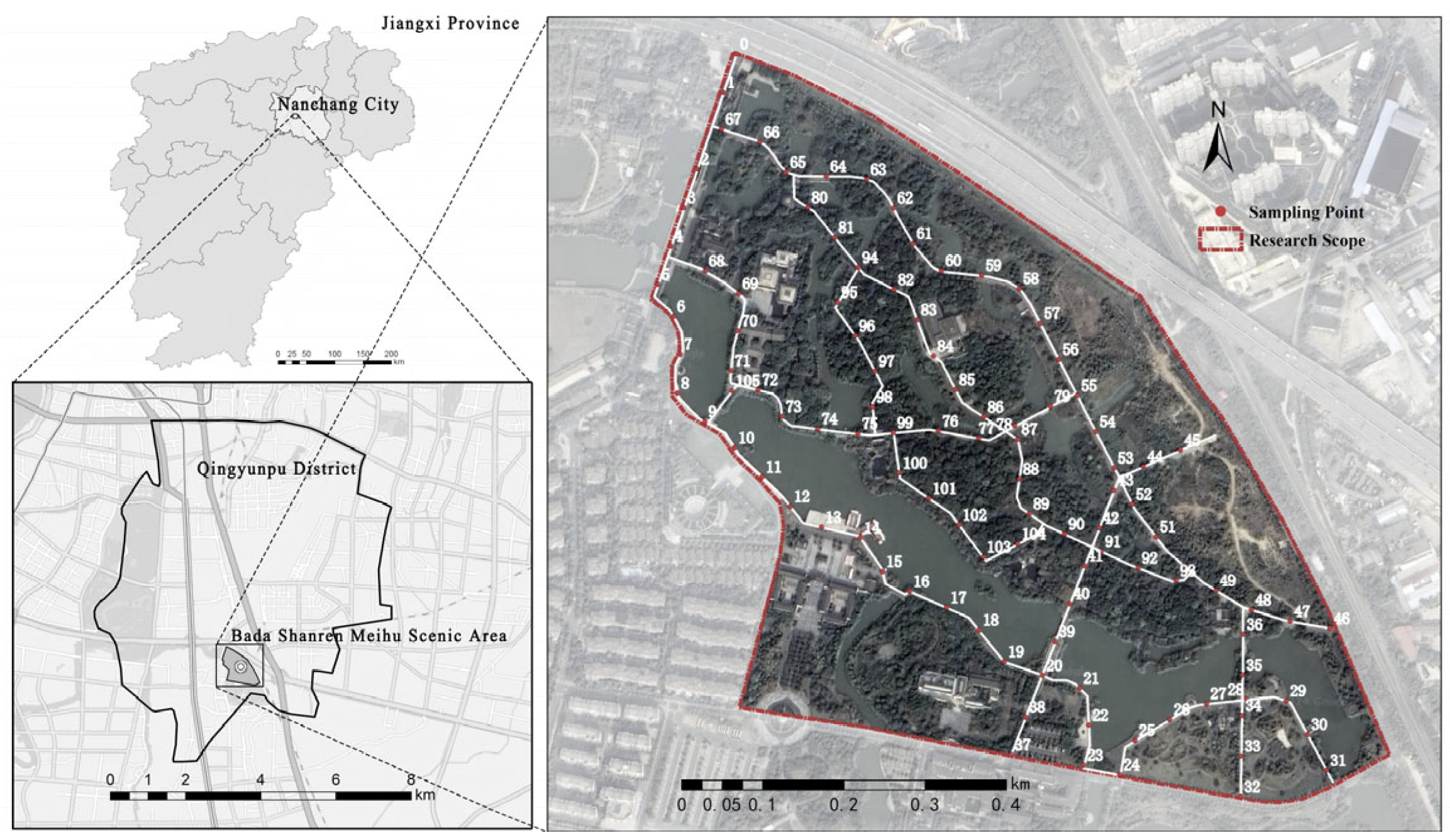

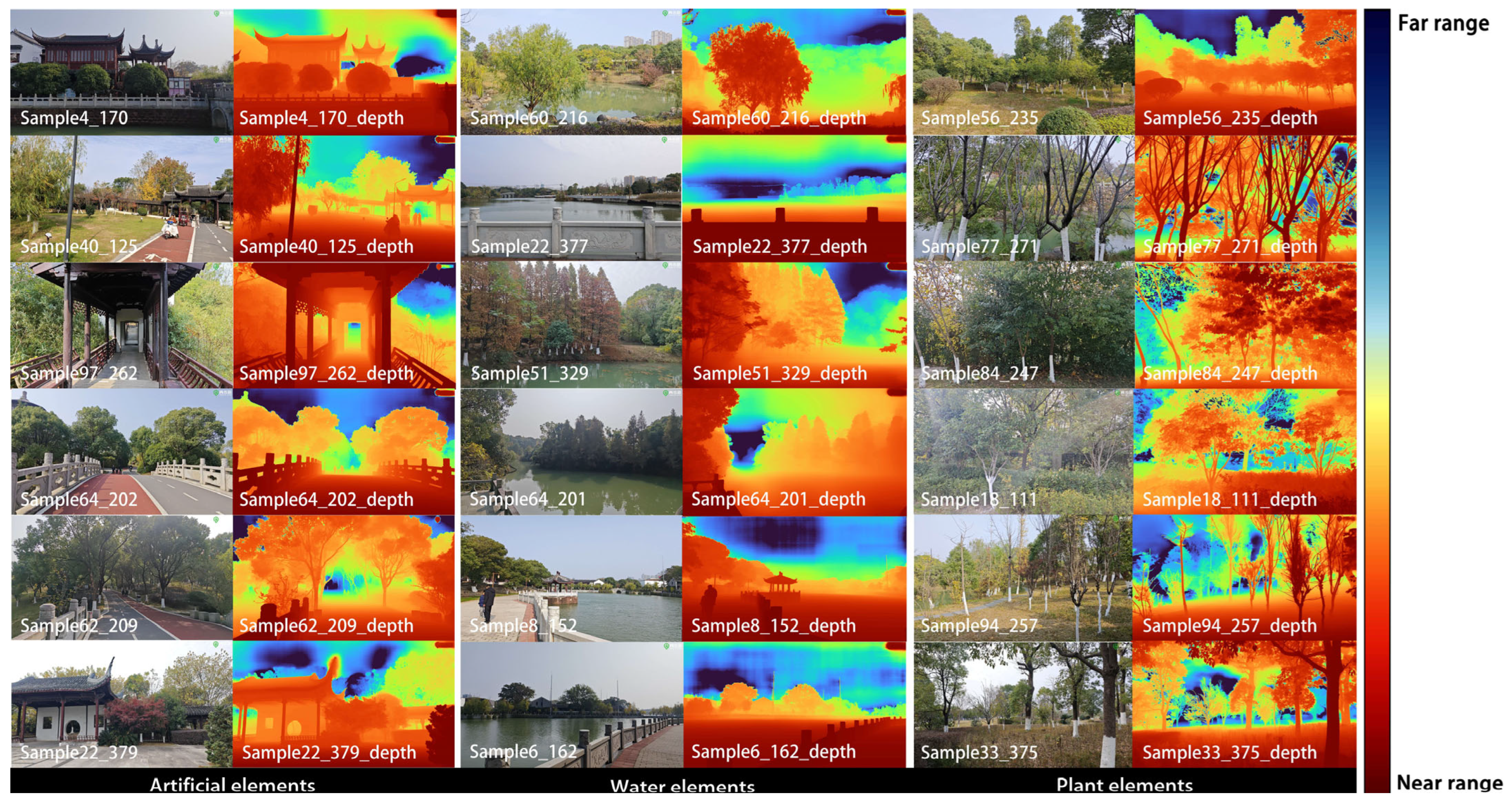


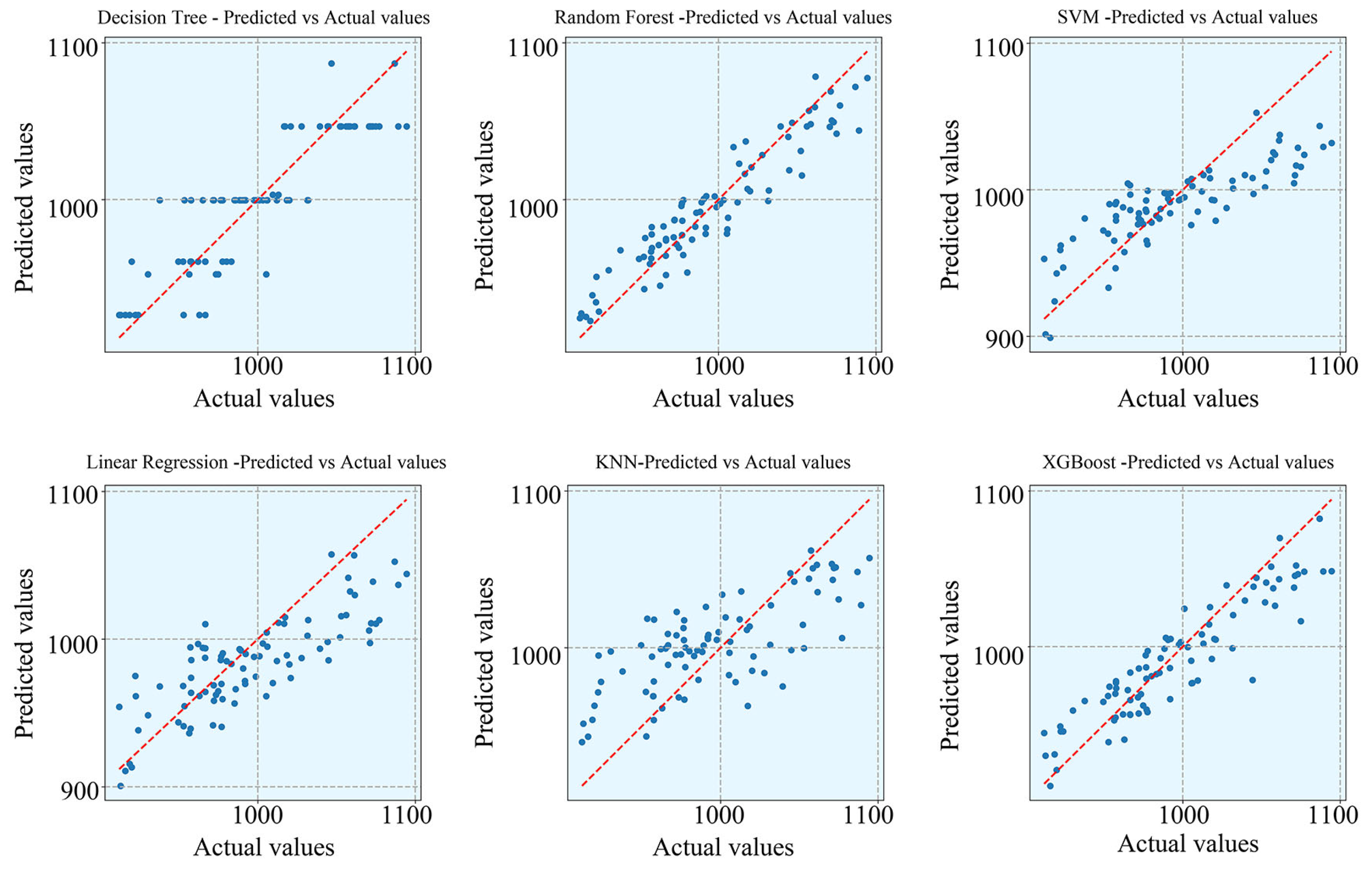

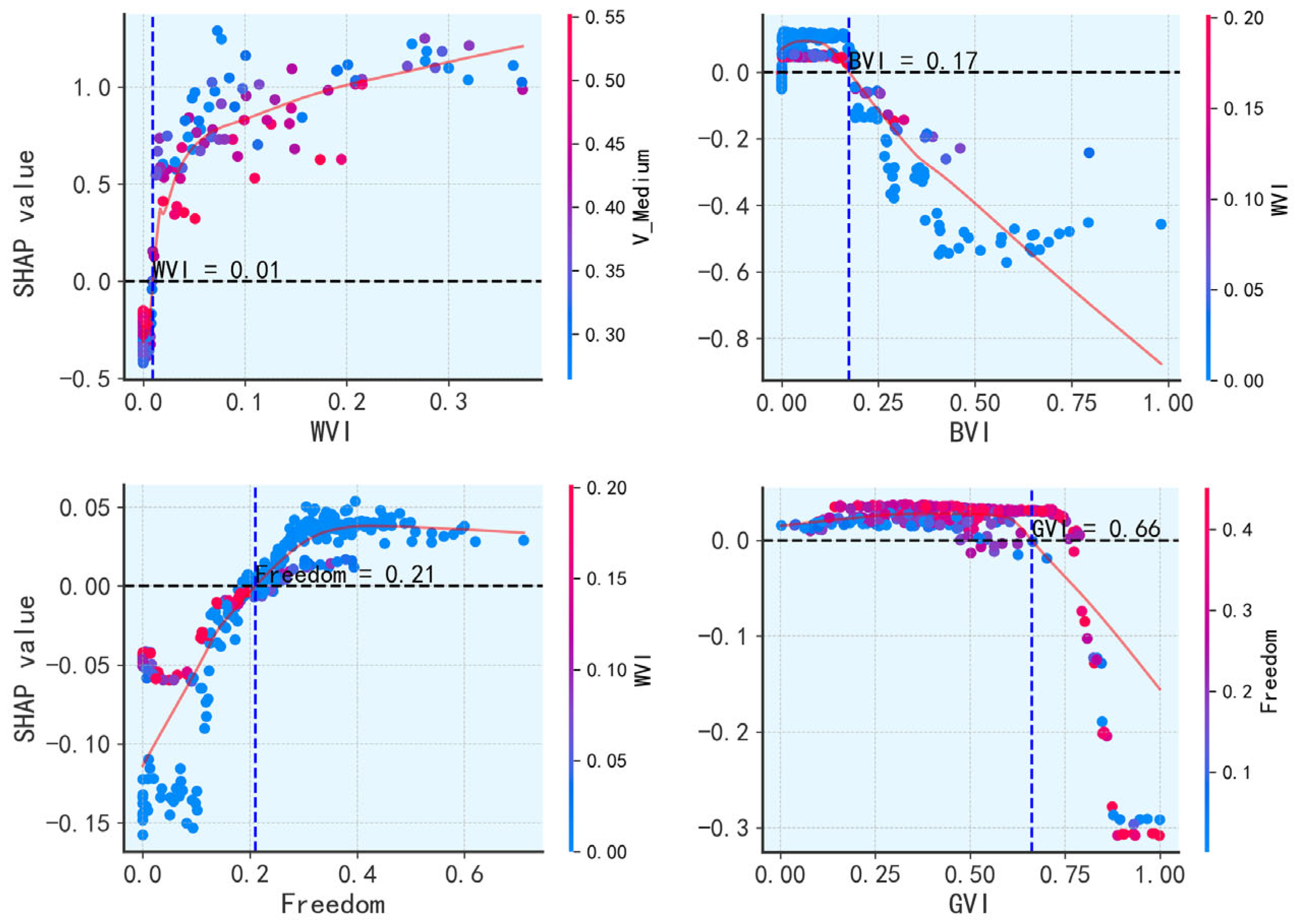
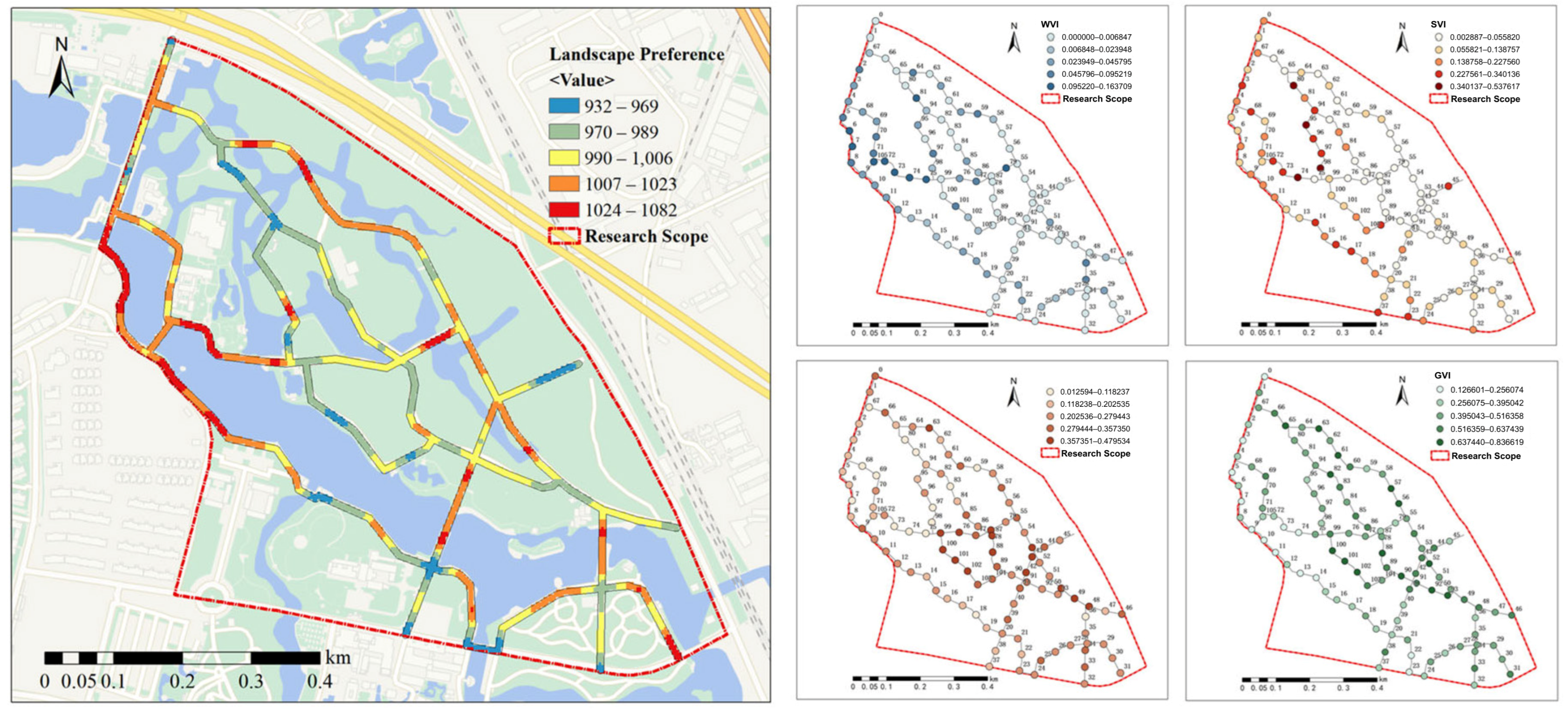



| Demographic Characteristic | Variables | Statistics | |
|---|---|---|---|
| Gender (%) | Male | 27 | 43.55% |
| Female | 35 | 56.45% | |
| Age (%) | <18 | 5 | 8.06% |
| 18—24 | 26 | 41.94% | |
| 25—30 | 15 | 24.19% | |
| 31—40 | 10 | 16.13% | |
| 41—50 | 4 | 6.45% | |
| 51—60 | 2 | 3.23% | |
| >60 | 0 | 0.00% | |
| Educational level (%) | Junior high school and below | 8 | 12.90% |
| High school | 12 | 19.35% | |
| College (bachelor’s degree) | 25 | 40.32% | |
| Master’s degree and above | 17 | 27.42% | |
| Dimension | Meaning | Indicator | Indicator Description |
|---|---|---|---|
| Environmental Features | Characteristics of Sufficient Natural Components | Naturalness | Proportion of natural elements (e.g., Plants, lawns, water bodies, rocks, mountains, etc.) Naturalness = arctan([Natural Elements]/[Gray Infrastructure]) |
| Characteristics of Wildness and Non-contact | Wildness | Ratio of flora to the arctangent of lawns plus all non-natural elements (including gray infrastructure and other artificial facilities) Wildness = arctan([Flora]/([Lawns] + [Non-natural Elements])) | |
| Degree of Human Intervention in the Environment | Artificialness | Proportion of artificial facility elements (e.g., buildings, seats, street lamps, signs, rain shelters, flower pots, outdoor flooring, sculptures, etc.) | |
| Characteristics of Sufficient Green Space | Green View Index (GVI) | Sum of the area proportion of all green components (trees, grass, flora) | |
| Characteristics of Sufficient Water Areas | Water View Index (WVI) | Proportion of rivers, lakes, and water bodies | |
| Spatial Features | Characteristics of Free Activity | Freedom | Sum of the area proportions of free activity spaces (lawns, soil, ground, outdoor surfaces) |
| Characteristics of Openness | Openness | Distance of objects in the image from the viewpoint; image bit depth | |
| Characteristics of Spatial Harmony | Coordination | Degree of coordination between artificial and natural elements Coordination = (Natural Elements × Non-natural Elements)/(Natural Elements + Non-natural Elements)2 | |
| Characteristics of Sufficient Air Space | Sky View Index (SVI) | Proportion of sky area in a view | |
| Characteristics of Sufficient Buildings | Building View Index (BVI) | Proportion of building area (houses, buildings, etc.) | |
| Color Feature | Hue | H_Red | Colors with hue in the ranges (0,30) for bright red and (330,360) for dark red in the HSV color system |
| H_Orange | Colors with hue in the range (30,60) in the HSV color system | ||
| H_Yellow | Colors with hue in the range (60,90) in the HSV color system | ||
| H_Green | Colors with hue in the range (90,150) in the HSV color system | ||
| H_Cyan | Colors with hue in the range (150,210) in the HSV color system | ||
| H_Blue | Colors with hue in the range (210,270) in the HSV color system | ||
| H_Purple | Colors with hue in the range (270,330) in the HSV color system | ||
| Saturation | S_High | Colors with saturation in the range (0.67,1) in the HSV color system | |
| S_Medium | Colors with saturation in the range (0.33,0.67) in the HSV color system | ||
| S_Low | Colors with saturation in the range (0,0.33) in the HSV color system | ||
| Value | V_High | Colors with value in the range (0.67,1) in the HSV color system | |
| V_Medium | Colors with value in the range (0.33,0.67) in the HSV color system | ||
| V_Low | Colors with value in the range (0,0.33) in the HSV color system | ||
| Rich and varied colors | Color_Richness | The differences and variations between the red, green, and blue channels in the image represent the degree of color variation | |
| The complexity and uncertainty of visual objects | Visual_Entropy | Measures the complexity of the image by the frequency of different brightness (grayscale) values appearing |
| Model | MAE | MSE | RMSE | R2 | Optimal Parameter |
|---|---|---|---|---|---|
| Decision Tree | 18.2542 | 525.0469 | 22.9139 | 0.7628 | ‘max_depth’: 3 |
| Random Forest | 13.6175 | 276.4786 | 16.6276 | 0.8751 | ‘max_depth’: 6, ‘n_estimators’: 100 |
| SVM | 23.1663 | 845.0411 | 29.0696 | 0.6183 | ‘C’: 1, ‘gamma’: ‘scale’, ‘kernel’: ‘linear’ |
| Linear Regression | 24.1837 | 925.0961 | 30.4154 | 0.5821 | |
| KNN | 27.6265 | 1105.8840 | 33.2548 | 0.5005 | n_neighbors’: 7 |
| XGBoost | 16.3487 | 418.3225 | 20.4529 | 0.8110 | ‘learning_rate’: 0.05, ‘max_depth’: 3, ‘n_estimators’: 100 |
| Objective Indicators | Mean | S.D. | Min | Max | Elo Score | |
|---|---|---|---|---|---|---|
| p | ||||||
| Naturalness | 0.9231 | 0.3833 | 0.0192 | 1.5708 | 0.156 ** | 0.001 |
| Wildness | 0.7386 | 0.3434 | 0.0000 | 1.5703 | 0.117 * | 0.015 |
| Artificialness | 0.3403 | 0.1937 | 0.0000 | 0.9811 | −0.23 ** | 0 |
| GVI | 0.4579 | 0.2210 | 0.0028 | 0.9995 | −0.136 ** | 0.005 |
| WVI | 0.0289 | 0.0672 | 0.0000 | 0.3726 | 0.527 ** | 0 |
| Freedom | 0.2428 | 0.1406 | 0.0000 | 0.7107 | 0.006 | 0.895 |
| Openness | 12.4689 | 14.4679 | 1.5693 | 75.2133 | 0.261 ** | 0 |
| Coordination | 0.1871 | 0.0708 | 0.0000 | 0.2500 | −0.028 | 0.561 |
| SVI | 0.1686 | 0.1321 | 0.0000 | 0.5006 | 0.399 ** | 0 |
| BVI | 0.1287 | 0.1745 | 0.0000 | 0.9810 | −0.147 ** | 0.002 |
| H_Red | 0.1893 | 0.0864 | 0.0123 | 0.5856 | −0.05 | 0.299 |
| H_Orange | 0.2769 | 0.1195 | 0.0243 | 0.7296 | −0.031 | 0.528 |
| H_Yellow | 0.1835 | 0.0924 | 0.0154 | 0.6058 | −0.001 | 0.982 |
| H_Green | 0.0913 | 0.0672 | 0.0022 | 0.6596 | −0.115 * | 0.018 |
| H_Cyan | 0.0898 | 0.0847 | 0.0020 | 0.5876 | −0.065 | 0.179 |
| H_Blue | 0.2183 | 0.1357 | 0.0072 | 0.6411 | 0.251 ** | 0 |
| H_Purple | 0.0246 | 0.0200 | 0.0013 | 0.1295 | −0.129 ** | 0.008 |
| S_Low | 0.7535 | 0.1306 | 0.3151 | 0.9799 | 0.025 | 0.601 |
| S_Medium | 0.2092 | 0.1055 | 0.0172 | 0.5316 | −0.04 | 0.413 |
| S_High | 0.0373 | 0.0322 | 0.0007 | 0.1867 | 0.019 | 0.699 |
| V_Low | 0.2684 | 0.0964 | 0.0257 | 0.6618 | −0.105 * | 0.03 |
| V_Medium | 0.4063 | 0.0910 | 0.1298 | 0.7242 | −0.202 ** | 0 |
| V_High | 0.3253 | 0.1211 | 0.0565 | 0.7541 | 0.245 ** | 0 |
| Color_Richness | 0.1198 | 0.0354 | 0.0366 | 0.2254 | 0.031 | 0.519 |
| Visual_Entropy | 7.5979 | 0.2342 | 6.7155 | 7.9343 | −0.12 * | 0.014 |
Disclaimer/Publisher’s Note: The statements, opinions and data contained in all publications are solely those of the individual author(s) and contributor(s) and not of MDPI and/or the editor(s). MDPI and/or the editor(s) disclaim responsibility for any injury to people or property resulting from any ideas, methods, instructions or products referred to in the content. |
© 2025 by the authors. Licensee MDPI, Basel, Switzerland. This article is an open access article distributed under the terms and conditions of the Creative Commons Attribution (CC BY) license (https://creativecommons.org/licenses/by/4.0/).
Share and Cite
Zhou, C.; Teng, J.; Liu, C.; Zhang, Y.; Ouyang, B.; Zeng, T.; Gong, H.; Zhang, C. Landscape Preferences of Recreational Walkways in Urban Green Spaces: Bada Shanren Meihu Scenic Area, China. Sustainability 2025, 17, 9931. https://doi.org/10.3390/su17229931
Zhou C, Teng J, Liu C, Zhang Y, Ouyang B, Zeng T, Gong H, Zhang C. Landscape Preferences of Recreational Walkways in Urban Green Spaces: Bada Shanren Meihu Scenic Area, China. Sustainability. 2025; 17(22):9931. https://doi.org/10.3390/su17229931
Chicago/Turabian StyleZhou, Chengling, Jinlin Teng, Chunqing Liu, Yiyin Zhang, Bingjie Ouyang, Tian Zeng, Huimin Gong, and Cheng Zhang. 2025. "Landscape Preferences of Recreational Walkways in Urban Green Spaces: Bada Shanren Meihu Scenic Area, China" Sustainability 17, no. 22: 9931. https://doi.org/10.3390/su17229931
APA StyleZhou, C., Teng, J., Liu, C., Zhang, Y., Ouyang, B., Zeng, T., Gong, H., & Zhang, C. (2025). Landscape Preferences of Recreational Walkways in Urban Green Spaces: Bada Shanren Meihu Scenic Area, China. Sustainability, 17(22), 9931. https://doi.org/10.3390/su17229931






